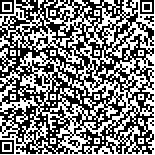| Quote
: |
彭宏,张娟,王应军.热敏灸结合PNF技术治疗脑梗死肩手综合征患者的临床疗效及血液流变学影响研究[J].湖南中医药大学学报英文版,2020,40(1):92-95.[Click to copy
] |
|
| |
|
|
| This paper
:Browser 1844times Download 537times |
| 热敏灸结合PNF技术治疗脑梗死肩手综合征患者的临床疗效及血液流变学影响研究 |
| 彭宏,张娟,王应军 |
| (湖南省宁乡市中医医院, 湖南 长沙 410600) |
| 摘要: |
| 目的 观察热敏灸结合本体感觉神经肌肉促进技术(proprioceptive neuromuscular facilitation,PNF)应用于脑梗死后肩手综合征患者Fugl-meyer上肢运动功能评分(FMA)、血液流变学的临床效果。方法 抽取本院60例中风后肩手综合征患者,随机分为对照1组、对照2组、观察组,每组各20例,对照1组进行热敏灸治疗,对照2组采用PNF技术治疗,观察组采用热敏灸结合PNF技术治疗。观察各组患者治疗前、治疗2个月后(全部疗程结束时)疗效、偏瘫上肢运动功能评分、血液流变学等的改善情况。结果 治疗后,观察组患者总有效率为95%,明显高于对照1、2组的65%、60%(P<0.05)。3组患者的Fugl-meyer上肢运动功能评分均较治疗前升高,血液流变学分值均较治疗前降低(P<0.05);且观察组较对照1、2组明显改善,差异有统计学意义(P<0.05)。结论 热敏灸结合PNF技术与单独使用其中一种方法相比,可明显改善脑梗死后肩手综合征患者的上肢运动功能和血液流变学指标,从而提高临床疗效。 |
| 关键词: 脑梗死 肩手综合征 热敏灸 PNF技术 血液流变学 上肢运动功能 |
| DOI:10.3969/j.issn.1674-070X.2020.01.020 |
| Received:June 03, 2019 |
| 基金项目:湖南省中医药科研计划项目一般课题(2017121)。 |
|
| Therapeutic Effect of Heat-Sensitive Moxibustion Combined with Proprioceptive Neuromuscular Facilitation Technology in the Treatment of Cerebral Infarction Patients with Shoulder-Hand Syndrome and Its Effects on Hemorheology |
| PENG Hong,ZHANG Juan,WANG Yingjun |
| (Ningxiang Hospital of Traditional Chinese Medicine, Ningxiang, Hunan 410600, China) |
| Abstract: |
| Objective To observe the clinical effects of heat-sensitive moxibustion combined with proprioceptive neuromuscular facilitation (PNF) technology on the Fugl-Meyer motor function assessment (FMA) and hemorheology of cerebral infarction patients with shoulder-hand syndrome. Methods A total of 60 patients with shoulder-hand syndrome after cerebral infarction were selected and randomly divided into control group 1, control group 2 and treatment group, with 20 patients in each group. The control group 1 was given heat-sensitive moxibustion, the control group 2 was treated with PNF technology, and treatment group was given therapy of heat-sensitive moxibustion combined with PNF technology. The curative effect, FMA, hemorheology in the 3 groups at 2 time points before treatment and after treatment for 2 months were observed. Results After treatment, the total effective rate of the observation group was 95%, which was significantly higher than 65%, 60% of the control group 1 and the control group 2 (P<0.05). The FMA of the 2 groups were increased than before treatment, and the hemorheology indexes were decreased than before treatment (P<0.05). The improvement in the observation group was more significant than those in the control group 1 and the control group 2. The difference was statistically significant (P<0.05). Conclusion Compared with using one method alone, heat-sensation moxibustion combined with PNF technology can significantly improve upper limb motor function and hemorheology indexes of patients with shoulder-hand syndrome after cerebral infarction, thereby improving clinical efficacy. |
| Key words: cerebral infarction shoulder-hand syndrome heat-sensitive moxibustion PNF technology hemorheology upper limb motor function |
|

二维码(扫一下试试看!) |
|


